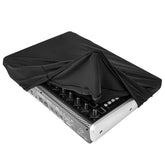Effective Strategies for Piano Practice: Overcoming Common Challenges
1. Pursuing Speed
The practice of blindly pursuing speed will only result in counterproductive outcomes. Proper music reading, finger strength training, addressing technical difficulties, and relieving tension... all of these can only be achieved through slow practice.
2. Lack of Focus in Practice
It is essential to identify and focus on the challenging aspects of a piece for separate practice. Practicing these challenging sections 10 times is more effective than practicing the entire piece 20 times!

3. Careless Music Reading
Before starting a new piece, it is crucial to carefully review all musical notations on the score, such as clefs, key signatures, rhythms, etc., and then practice slowly and separately with each hand. Only by ensuring correct music reading can further improvement be achieved.
4. Incorrect Posture
Improper posture during practice, especially among young piano learners who are still growing, can directly affect their physical development. Prolonged incorrect posture can lead to hand problems that are difficult to correct.

5. Blind Pursuit of "Standard Hand Position"
It's not that pursuing a standard hand position is wrong, but the commonly accepted notion of a "standard hand position" in recent years in China has many drawbacks. Overemphasis on hand position can cause children to be tense, resulting in stiff bodies and a lack of power transmission to the fingertips.
6. Lack of Concentration
Not only children but also many adults face this issue during piano practice. Only with full concentration can optimal practice results be achieved. Therefore, when a child's attention during practice is scattered, it is essential to remind them or let them take a few minutes of rest before continuing practice.







